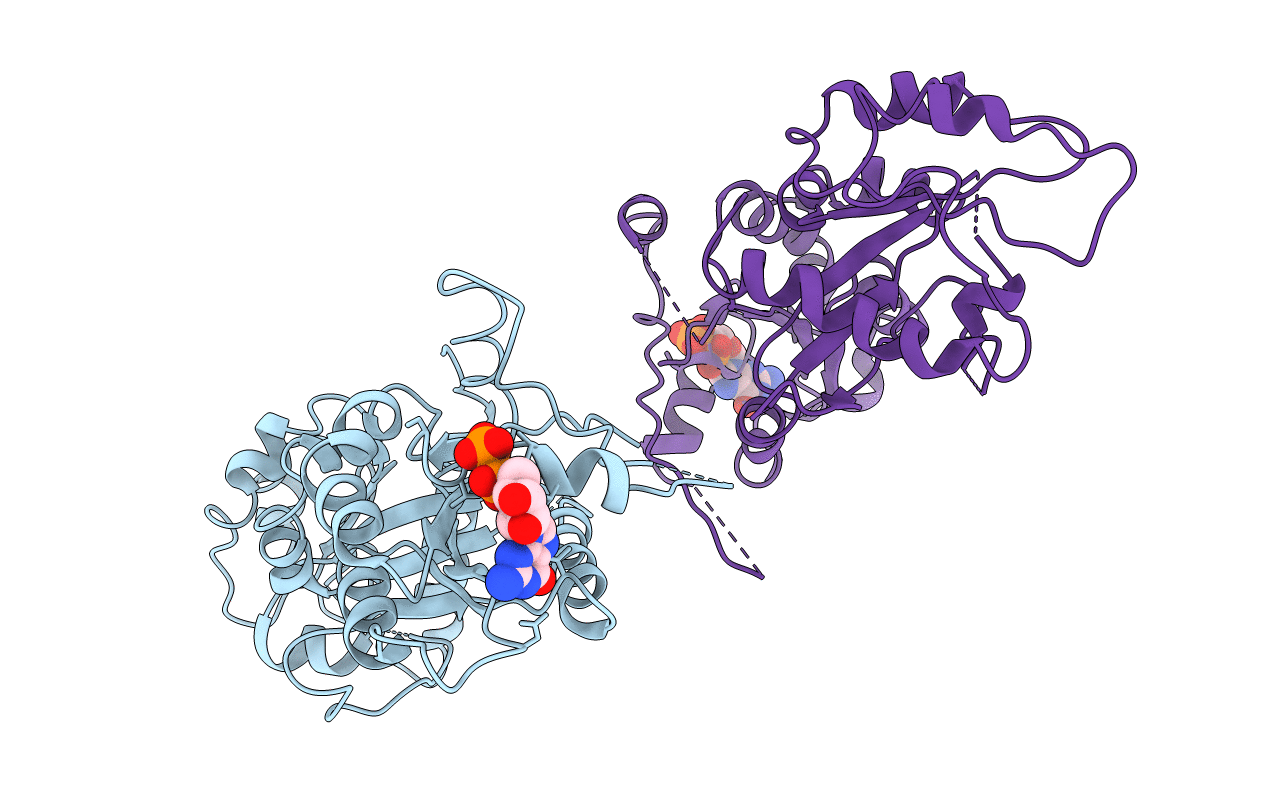
Deposition Date
2015-06-15
Release Date
2016-04-27
Last Version Date
2024-11-20
Entry Detail
PDB ID:
5C1S
Keywords:
Title:
Crystal structure of the GDP-bound fast hydrolyzing mutant (V71A/K73Q) of EhRabX3 from Entamoeba histolytica
Biological Source:
Source Organism:
Entamoeba histolytica (Taxon ID: 5759)
Host Organism:
Method Details:
Experimental Method:
Resolution:
3.10 Å
R-Value Free:
0.32
R-Value Work:
0.29
R-Value Observed:
0.29
Space Group:
P 61


